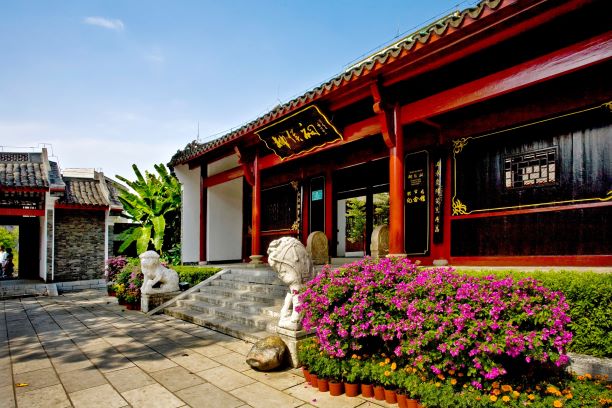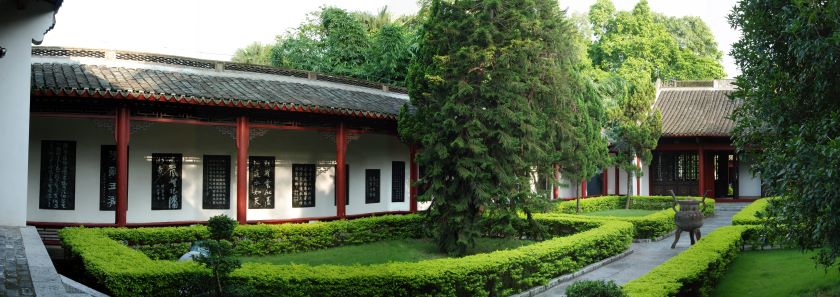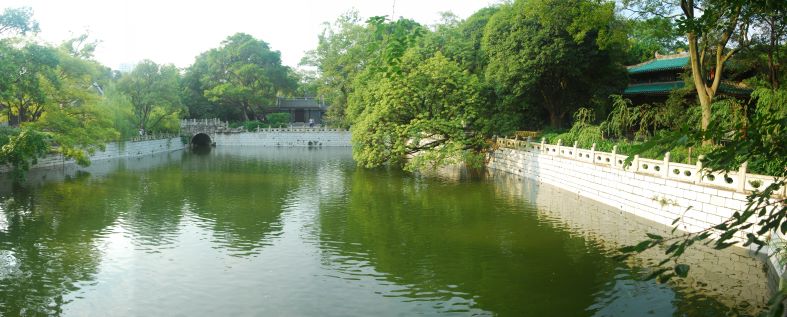柳侯祠原名罗池庙,是柳州地方人士为纪念“唐宋八大家”之一的柳宗元而兴建的祠堂,为国家重点文物保护单位,著名的人文景观和旅游景区,占地面积25000平方米。
主体建筑柳侯祠始建于唐长庆二年(公元822年)。门额“柳侯祠”三字为郭沫若手书。祠内保存有《荔子碑》、《柳州路文宣王庙碑》、《元刻柳宗元像跋》、《重修罗池庙记》、《柳江书院碑记》等历代珍贵碑刻60余方,附属建筑有柳宗元衣冠墓、柑香亭、思柳轩、罗池、贤良祠、讲堂、山长住房等,遗址分布面积约三万平方米。祠堂白壁青瓦、红栋丹梁,清雅简朴,历史文化底蕴厚重。景区蜿蜒曲折,典雅别致,极富岭南山水园林特色。
Liuhou shrine is one of the key cultural relics units of in Guangxi Zhuang Nationality Autonomous Region, was built in 822 A.D. in memory of Liu Zongyuan. The memorial shrine was renovated several times in the later dynasties. According to the picture on the Annals of Liuzhou published in the 29th year of Qianlong Period of Qing Dynasty , Liuzhou government rebuilt the temple in 1988 . Around the Temple, there are some other relics , such as Liuzhou Cenotaph, Ganxiang Pavilion, Luochi Pond and Siliu Veranda. The three charaters on the gate of Liuhou shrine were writen by Mr Guo Moruo, who was one of the masters of modem China. In the Temple, there are dozens of invaluable stone inscriptions. Among them, the most important one is called Lizi Gravestone, which was carved in Song Dynastry. It is famous in three respects that it incorporates HanYu’s prose , Shu Dongpo’s calligraphy and Liu Zongyuan’s experience together.






 桂公网安备45020202000375号
桂公网安备45020202000375号